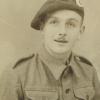Consequent upon the loyal support shown by certain of the races in Sarawak during the Brunei rebellion, it was thought that if more people with a similar purpose in life could be raised along the entire border between Kalimantan and the Borneo Territories, the difficulties in dealing with any possible future incursions from the South would be very much easier to counteract. This far-sighted idea initially had only a few supporters amongst the permanent senior members of the European community and it was only after considerable deliberation that the go-ahead was given.
In Sarawak, the people involved Land Dyaks, Ibans, Kayans, Kenyahs, Kelabits and Muruts. In Sabah, the majority of people in the affected areas are Muruts, but of a different type from their neighbours. With much diversity of races considerable differences of capabilities and potential emerge, apart from differing language, customs and temperament.
Despite the prevalence of rivers and jungle, Borneo is a land of contrasts, if not contradictions. For the former, uplands, mountains, grand scenery and longhouses are more alluring than the less exciting plains and more humble dwellings which, being nearer civilization, tend to have less appeal. The contradictions lie in the varying opinions held by those whose opinion in sought. These are diverse and stem from whether the indigenous population has been looked on as fodder of missionaries, anthropological survey material, tax paying natives or merely as adjuncts of the tourist trade. Working hand in glove with them all as Border Scouts, much of what has been said or read about appears dull and inaccurate.
By June, 1963, training for men in the First and Second Divisions of Sarawak had started. Under officer supervision, men of the Gurkha Independent parachute Company and Special Air Service Regiment trained the Scouts in basic section tactics and weapon training. Language difficulties were not as acute as could be imagined. English, Gurkhali and Malay, with a retranslation by a Malay- or English-speaking member of the Scouts into one of the five Land Dyak languages or Iban, was indeed a slow, cumbersome and often inaccurate method of instruction, but it worked.
The British soldiers moved on and the Gurkha soldiers remained as Section Commanders to the newly-formed and trained Scouts. Spread along the frontier, often as satellite to a remote longhouse, using a language that did not come easily to him, the Gurkha found it lonely, uncomfortable, primitive and strange. His charges were frightened by the possibility of an armed enemy incursion resulting in a fire fight and were unused to Gurkha-type discipline. Results achieved and steadfastness shown by the very great majority, for the most part unsung, was most gratifying. At places in the Western part of the First Division, the Border Scout Sections lived with the Marine Commandos. Here the jargon was confusing at first. This is best illustrated by when a Marine Sergeant said to a Gurkha Corporal, "I want four hands on watch at eight o'clock," and received the reply, "My watch has two hands at eight o'clock."
Supervision of the sections proved difficult. In some areas there were roads. There landrovers were invaluable, but otherwise helicopters, fixed-wing aeroplanes and longboats, combined with much hard walking, were the normal methods.
Border Scouts are now all along the border except in certain places. Teething troubles there have been, obviously, but in the main the Scouts are just like anyone else in the world: the more that there is put into them, the more than can be got out of them. They are of extreme importance to the future of the country and the measure of their present success is to the credit and enhancement of those Gurkha soldiers who, in the early formative days, had greatness thrust upon them and accepted it all with never the flicker of an eyelid.
By kind permission of Lt Col John Cross
Source: Reproduced by kind permission of Lt Col John Cross
Read More




Latest Comments
There are currently no comments for this content.
Add Comment
In order to add comments you must be registered with ParaData.
If you are currently a ParaData member please login.
If you are not currently a ParaData member but wish to get involved please register.